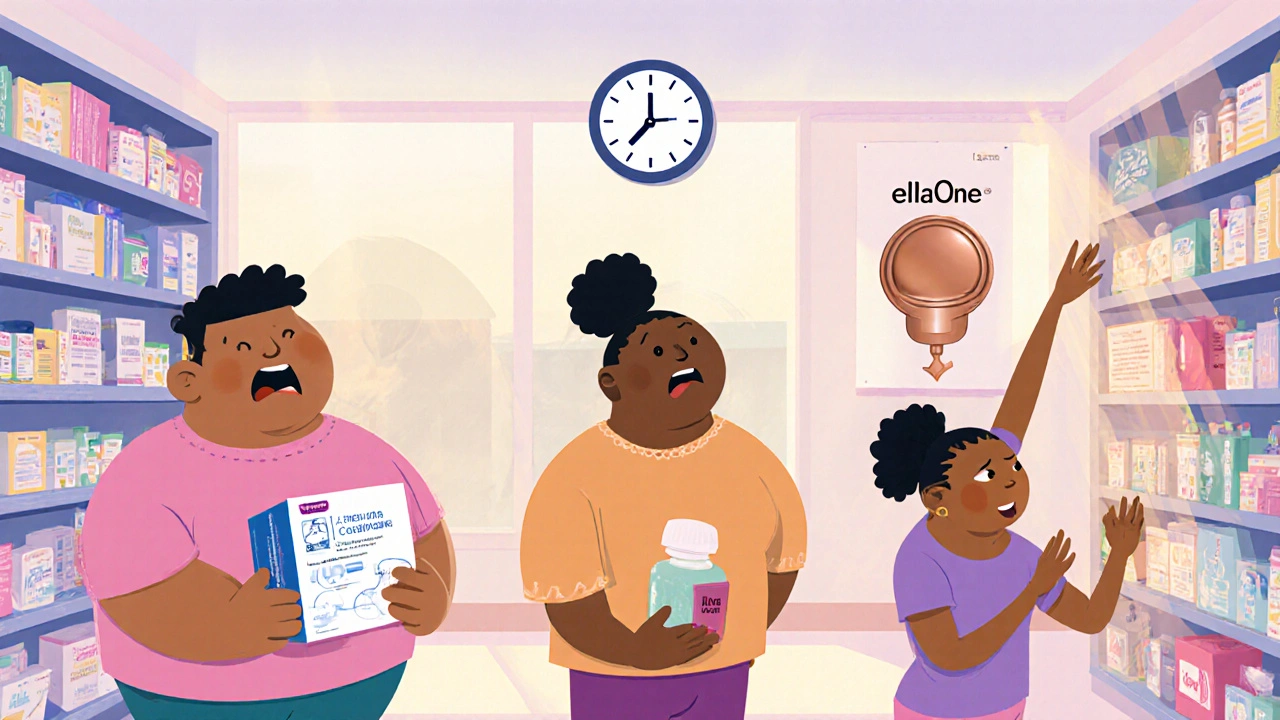Morning After Pill: What It Is, How It Works, and What You Need to Know
When you need help fast after unprotected sex, the morning after pill, a form of emergency contraception used to prevent pregnancy after unprotected sex or contraceptive failure. Also known as emergency contraception, it’s not a regular birth control method—but it can make a real difference if taken quickly. It works by delaying or stopping ovulation, which means the egg isn’t released and sperm can’t fertilize it. It doesn’t end an existing pregnancy or harm a developing embryo. That’s a common myth, and it’s important to get this right.
The two main types you’ll find are levonorgestrel, a synthetic hormone used in most over-the-counter morning after pills like Plan B One-Step and ulipristal acetate, a stronger option sold under the brand name Ella, which requires a prescription in many places. Levonorgestrel works best within 72 hours, but its effectiveness drops after that. Ulipristal acetate stays effective for up to 120 hours, making it a better choice if you’re closer to the 3-day mark. Neither works if you’re already pregnant, and neither protects against STIs.
Side effects are usually mild—nausea, headaches, or a change in your next period. Some people vomit within a few hours; if that happens, you might need to take another dose. Your period might come early, late, or be heavier or lighter than usual. If it’s more than a week late, take a pregnancy test. You can still get pregnant after taking the pill, especially if you have sex again without protection. That’s why it’s called emergency contraception, not a regular solution.
People often ask if it’s safe to use more than once. Yes, it’s safe to use multiple times, but it’s not meant to replace your regular birth control. Using it often can mess with your cycle and isn’t cost-effective. If you’re having unprotected sex often, talk to a doctor about long-term options like IUDs, implants, or daily pills. Those are more reliable and easier to manage.
There’s also a non-hormonal option: the copper IUD. Inserted within five days after unprotected sex, it’s the most effective form of emergency contraception and can stay in place for years as ongoing birth control. It’s not a pill, but it’s worth considering if you’re open to a medical procedure.
Where you get it matters too. In many places, levonorgestrel is sold over the counter without ID or age restrictions. Ulipristal acetate and the copper IUD need a prescription or clinic visit. Don’t wait until the last minute—timing is everything. The sooner you take it, the better it works.
Below, you’ll find detailed comparisons and real-world insights on emergency contraception, including how different pills stack up, what to expect after taking them, and how to avoid common mistakes. Whether you’re looking for the fastest option, the most affordable, or the safest long-term path forward, you’ll find clear, no-fluff answers here.
I-Pill vs Alternatives: What Works Best for Emergency Contraception?
Compare I-Pill (levonorgestrel) with ellaOne and copper IUD for emergency contraception. Learn which option works best based on timing, effectiveness, and long-term needs.

